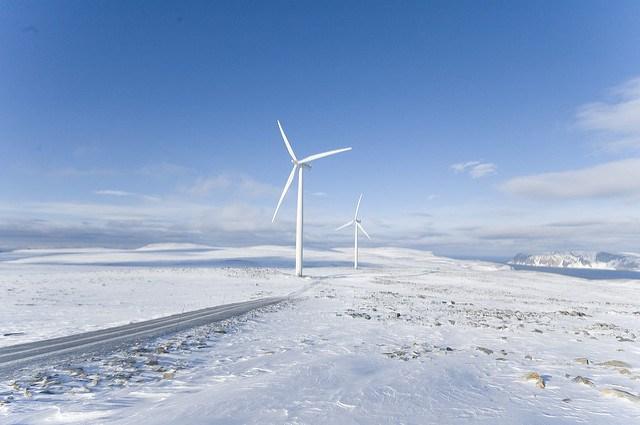
Google, which describes itself as the world’s largest buyer of clean energy, announced another investment in renewables last week. Its parent company, Alphabet Inc., entered into an agreement to purchase at least 236 megawatts of wind power with BlackRock and the Norwegian clean power companies Zephyr and Norsk Vind Energi. Upon their completion, the wind farms in Norway and Sweden will power Google’s data centers within the European Union.
The jewel of Google’s latest renewables investment is the 160 MW Tellenes wind farm, located south of Norway’s North Sea oil boom town, Stavenger. Siemens will supply, install and operate 50 wind turbines for the project, which will start this month and is slated to be fully commissioned by late 2017. Each of the turbines has a rotor diameter of 113 meters (371 feet) and can individually generate 3.2 MW of power. According to Siemens, the Tellenes facility will produce enough power to electrify 30,000 Norwegian homes. The project is yet another significant development in Norway's energy strategy. (Despite its oil wealth, the country has an ambitious low-carbon agenda.)
The other wind farm from which Google will procure clean electricity, with a targeted capacity of 76 MW, is located near Toreboda, Sweden. The joint venture between Rabbalshede Kraft, a Swedish renewable power producer, and Ardian, a private investment company, is also expected to be up and running during the last quarter of 2017.
The moves increase Google’s total renewable power deals to 18 worldwide and seven in Europe, said Marc Oman, the company’s EU energy lead. With a total of 2.5 gigawatts of renewable power stretched across four continents, Google says its clean energy purchases are the equivalent of taking 1 million cars off of the road. The company has long claimed it is an energy-efficiency leader, stating that its 15 data centers consume 50 percent less energy than those operated by other companies.
These new wind power agreements extend what Google says is its leadership on environmental sustainability. The company says it has been carbon neutral since 2007, and long touted its innovation on developing new sources of clean energy, with an old gas field turned solar plant in California's San Joaquin Valley just one example. In addition to clean energy investments, Google leveraged its technology to produce a variety of tools, from mapping tools that track deforestation and air pollution to investing in electric cars.
With more consumers wanting assurance that the apps and online tools they use have a minimal effect on the environment, Google is showing its competitors that they have a long way to go if they are ever going to catch up with the world’s search giant.
Image credit: Statkraft/Flickr

Leon Kaye has written for 3p since 2010 and become executive editor in 2018. His previous work includes writing for the Guardian as well as other online and print publications. In addition, he's worked in sales executive roles within technology and financial research companies, as well as for a public relations firm, for which he consulted with one of the globe’s leading sustainability initiatives. Currently living in Central California, he’s traveled to 70-plus countries and has lived and worked in South Korea, the United Arab Emirates and Uruguay.
Leon’s an alum of Fresno State, the University of Maryland, Baltimore County and the University of Southern California's Marshall Business School. He enjoys traveling abroad as well as exploring California’s Central Coast and the Sierra Nevadas.














